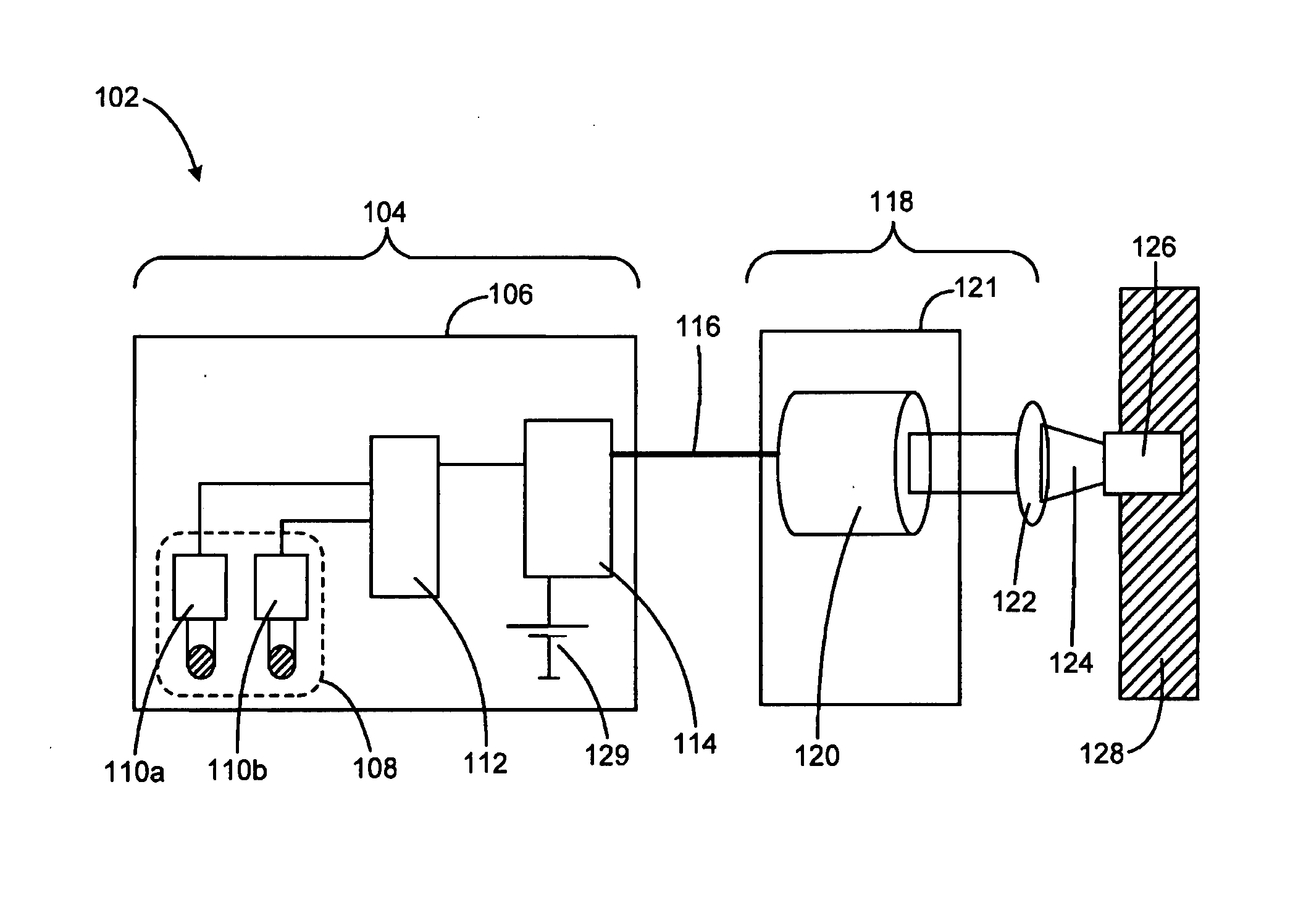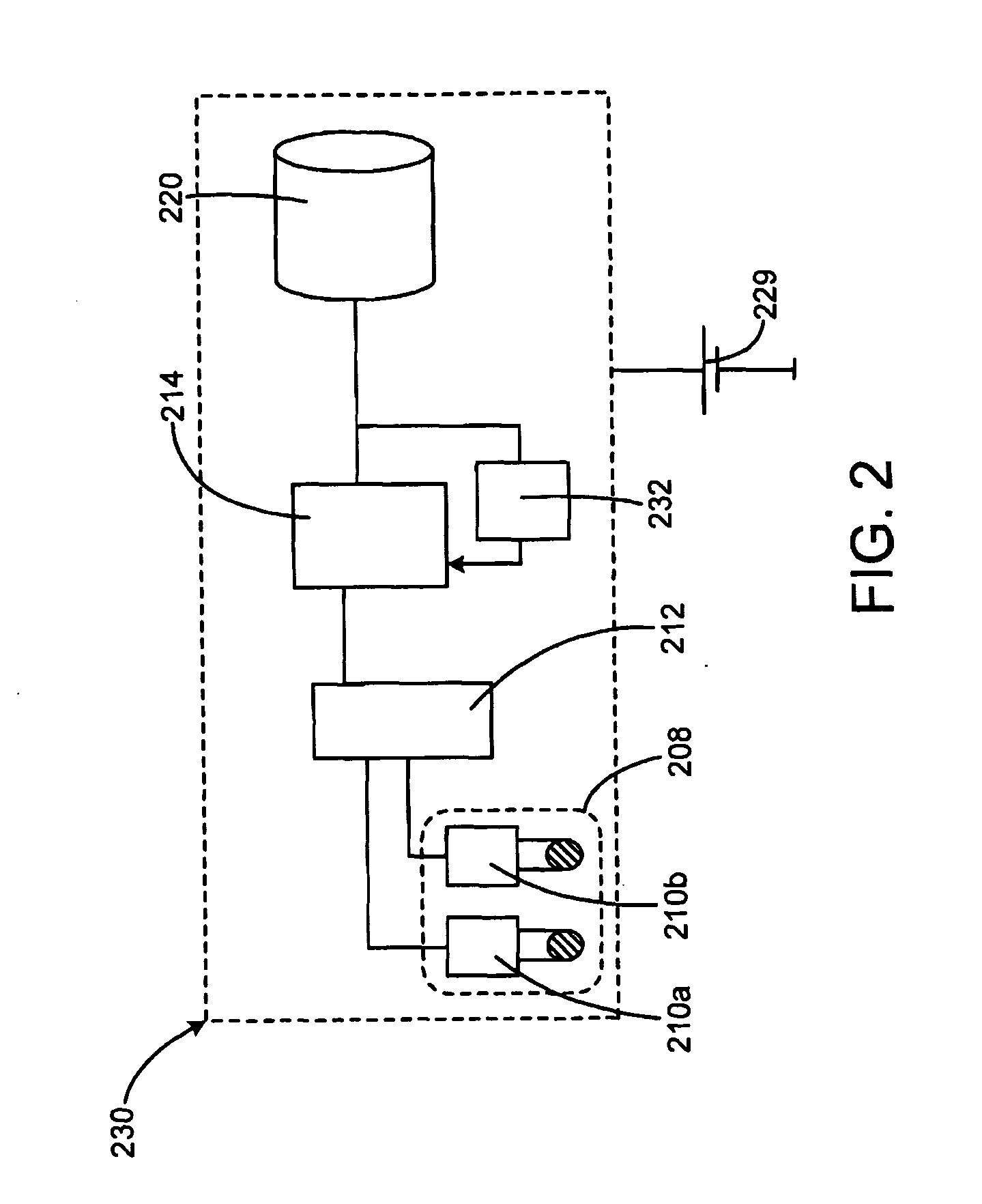Power direct bone conduction hearing aid system
a technology of bone conduction and hearing aids, applied in the field of hearing aids, can solve the problems of patient's severe sensorineural hearing loss component that cannot be well rehabilitated, and achieve the effects of reducing the risk of feedback, avoiding feedback, and reducing the gain
- Summary
- Abstract
- Description
- Claims
- Application Information
AI Technical Summary
Benefits of technology
Problems solved by technology
Method used
Image
Examples
Embodiment Construction
[0031]FIG. 1 shows a schematic drawing of a hearing aid system 102. A microphone unit 104 has a housing 106. A microphone system 108 has two microphones 110a and 110b. An A / D-converter 112 converts the analog signal from the microphones 110a and 110b to a digital signal that goes into a digital signal processing and amplifier circuit 114. The signal from the digital signal processing and amplifier circuit 114 goes via a cord 116 from the microphone unit 104 into a vibrator unit 118 where a vibrator 120 is located. The vibrator unit 118 has a housing 121.
[0032]The vibrator 120 is connected to a coupling 122 that is attached to a skin-penetrating abutment 124. The skin-penetrating abutment 124 is connected to a fixture 126 that is anchored in the skull bone 128. The electronics are powered by a battery 129.
[0033]In this way, the sound that is picked up by the microphone system 108 is amplified by the digital signal processing and amplifier circuit 114 and converted into vibrations in ...
PUM
 Login to View More
Login to View More Abstract
Description
Claims
Application Information
 Login to View More
Login to View More - R&D
- Intellectual Property
- Life Sciences
- Materials
- Tech Scout
- Unparalleled Data Quality
- Higher Quality Content
- 60% Fewer Hallucinations
Browse by: Latest US Patents, China's latest patents, Technical Efficacy Thesaurus, Application Domain, Technology Topic, Popular Technical Reports.
© 2025 PatSnap. All rights reserved.Legal|Privacy policy|Modern Slavery Act Transparency Statement|Sitemap|About US| Contact US: help@patsnap.com



